Winter is in full swing! Beat the post-holiday blues by hitting the slopes at our recommended best ski destinations.
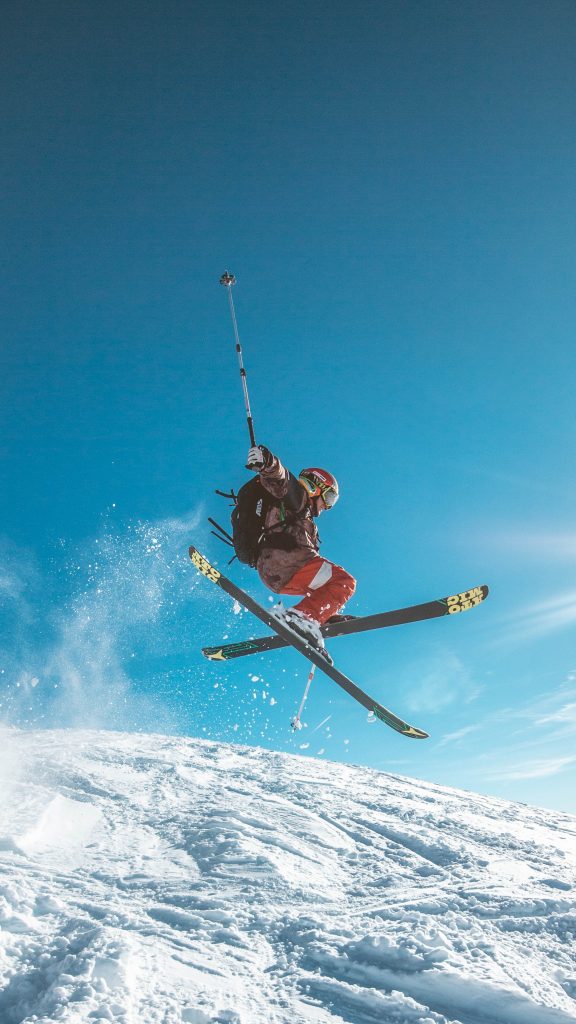
Table of Contents
A Brief History of Skiing
In the 18th century, the Norwegian and Swedish military started skiing. They used skiing as exercise and to test their endurance and stamina. Even today, with our incredibly light skis and our technology, we know cross-country skiing is tough.
The love of skiing became more prominent all over the world. From the Alps, America, and Canada, it was time for it to become a notified sport. The more traditional cross-country skiing remained well known. At the time, lift systems had not yet been invented, so your only way up was by walking.
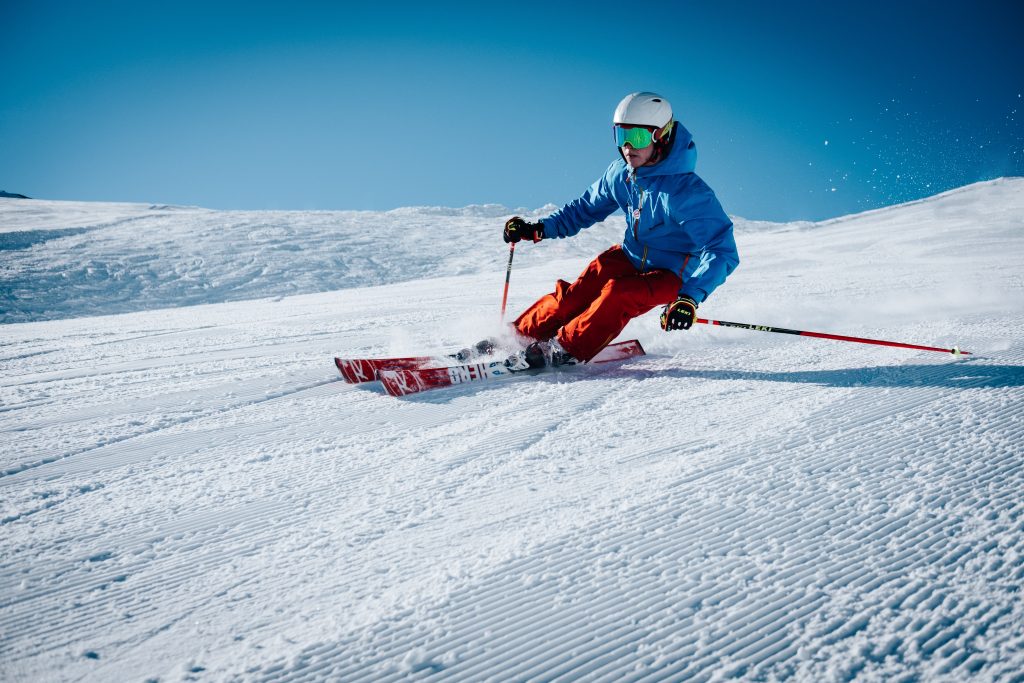
The first winter Olympics was in 1924 in the famous resort of Chamonix, France. Moreover, the major event had sports such as ice skating, curling, and cross-country skiing. During the 1936 Winter Olympics in Germany, downhill skiing was showcased. There was downhill racing and dodging between poles slalom style.
Tourism
Tourism allowed mountain villages and towns across the US and internationally to build gondolas, rope tows, and chairlifts. These became the first ski resorts we know and love today. As the winter tour industry began to boom, the demand developed too. In turn, it brought much-needed money to build hotels, restaurants, and mountain huts to feed hungry skiers.
Throughout the 20th century skiing as a recreational sport opened in resorts in Canada, the US, the Alps, and Scotland. Different ways and techniques of skiing also developed. For example, moguls and freestyle skiing, which then by 1989 became Olympic sports in the Winter Olympics.
Best Ski Destinations
We’ve carefully curated the list of our favorite ski destinations around the world. If you are interested in flying to any of these destinations, check out our website for special military deals. We offer many packages for not only you but your dependents as well.
Breckenridge Ski Resort, Colorado
Breckenridge is one of the most popular ski resorts in Colorado with a world-renown ski town. It is an extremely popular ski destination with a bustling historic town and a laid-back vibe. Breck is undoubtedly an awesome mountain to ride, but it can also get frustratingly crowded. This isn’t surprising given all the things Breck has going for it; affordable lodging, an abundance of slopes, and North America’s highest lift.
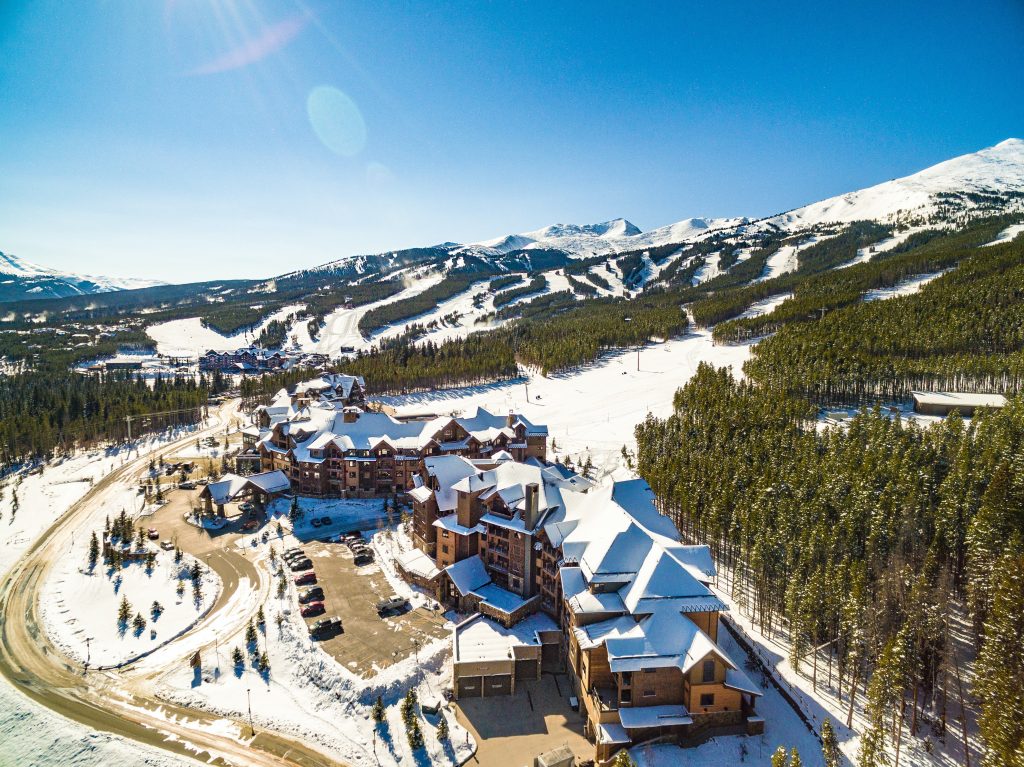
The town atmosphere is fun and relaxed. Additionally, there are a ton of shopping, dining, and drinking options to choose from. Accommodation options here are varied and plentiful, with hundreds of hotels and thousands of condo units to stay in. With so much to offer, Breck makes for a great ski resort that suits all budgets.
Vail Mountain Resort, Colorado
The biggest of Colorado’s ski resorts, and one of the largest in the world, Vail offers enough terrain to keep any skill level busy. Long, well-groomed runs overlook the luxury hotels and upscale restaurants and shops in the equally well-manicured town of Vail.
Experts head for the seven back bowls for bumps and glades. They expect 350 inches of annual snowfall to keep in prime condition. Vail is also known for its 5,289 acres of skiing. Three separate terrain parks keep riders happy, and backcountry skiers find powder heaven here.
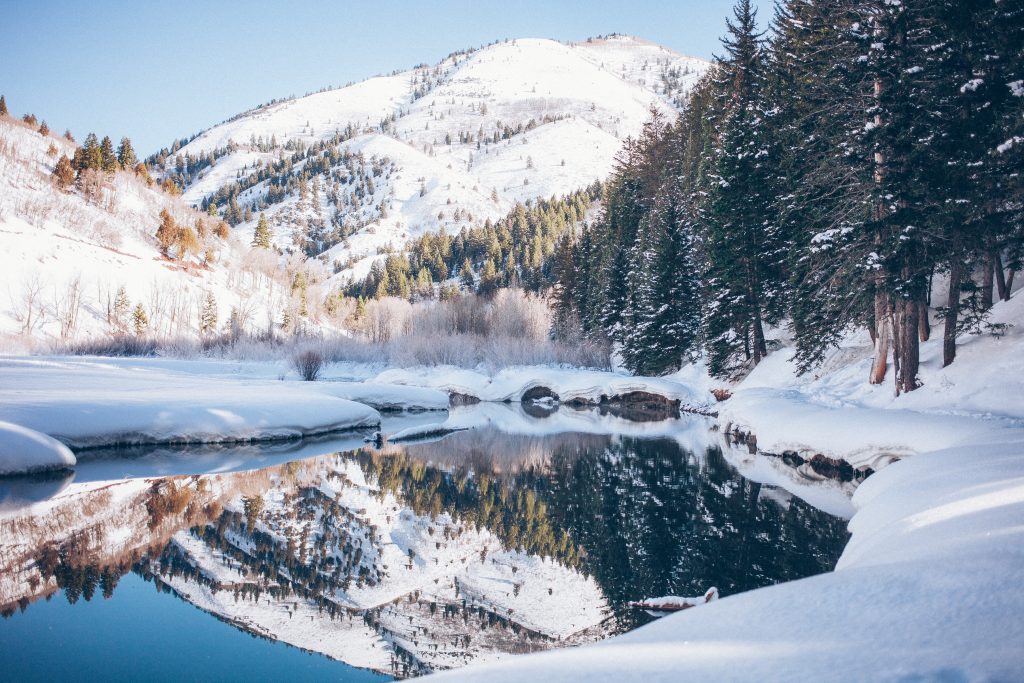
To alleviate overcrowding, all Vail Resorts will limit daily ticket sales in the 2022/2023 season. Those without an EPIC pass should reserve ahead to be sure of a ticket.
Aspen Snowmass, Colorado
Aspen Snowmass is made up of four ski areas and is among the several ski resorts in Colorado,. The combined terrain of Snowmass, Aspen Mountain, Aspen Highlands, and Buttermilk exceeds 5,500 acres. Snowmass alone accounts for more than 3,000 acres.
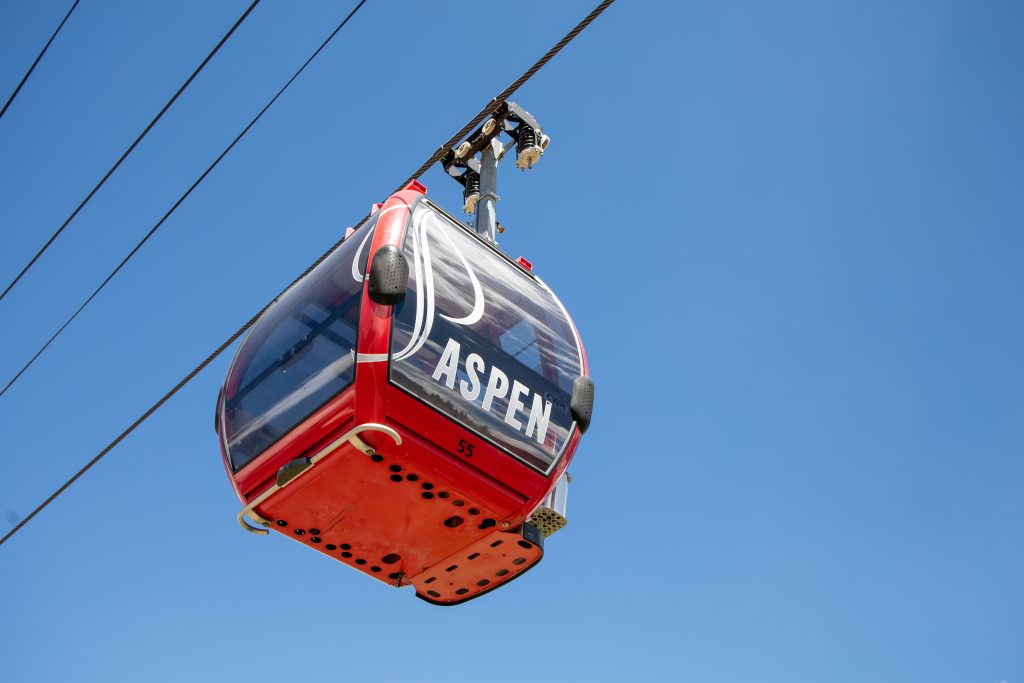
Although the smallest of the four, Buttermilk is known for hosting the Winter X-Games since 2002. The 2023 games are scheduled for January 27-29, bringing nearly 100 top skiers and winter sports stars to Aspen.
Aspen Mountain is strictly for intermediate and expert skiers, with steep terrain. The Aztec run is the scene of the annual World Cup Women’s Downhill. Aspen Highlands, known for expert runs, is also a favorite for backcountry skiers, who hike to the high-alpine terrain.
Furthermore, Aspen is known for its advanced and expert runs. It has completed the three-year glade project at Aspen Highlands to clear new lines in the steep, wooded Lucky Find area. The number of Hollywood and sports stars who own property here has given Aspen its reputation as a glamor resort.
Although much of the backcountry terrain is for experienced skiers, Aspen is unusual. It has some easy areas that are safe for newcomers to ungroomed terrain. This is one of the first places on the continent where backcountry skiing became popular; it still leads the pack. Aspen Powder Tours takes skiers and riders by snowcat into the powder stashes behind Aspen Mountain.
Jackson Hole, Wyoming
If you’re looking for a ski resort that caters to families, look no further than Jackson Hole Mountain Resort. Known as the best ski resort in Wyoming it has endless runs for all levels of skiers and snowboarders. Jackson Hole also has a variety of family-friendly activities off the slopes, Jackson Hole is sure to keep everyone entertained.
Whether you’re a beginner or an expert. And when you need a break from the slopes, there’s plenty to do off the mountain as well. From dog sledding and sleigh rides to snowmobiling and ice skating, there’s something for everyone at Jackson Hole.
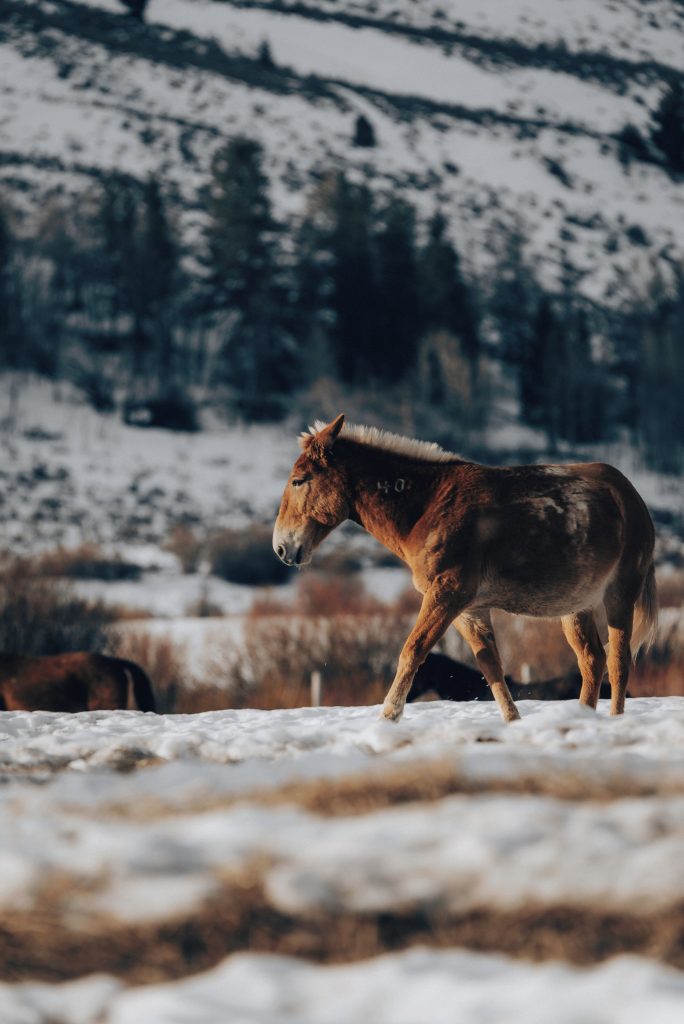
Ski and snowboard enthusiasts absolutely love Jackson Hole. The mountain has a combination of beginner terrain. It also has the most difficult terrain even for the most expert skiers in your group. As you ride your tram to the top of the mountain, you’ll feel a rush of excitement with all the skiable acres.
Jackson Hole’s average daily snowfall in recent years has been 38 feet, according to statistics. Over 2,400 acres are covered at the resort, which includes more than 100 named run areas and multiple terrain parks.
Park City, Utah
The city existed meagerly until 1963 when Park City qualified for a federal loan from the Federal Area Redevelopment Agency. With government assistance and other contributions, the new ski resort Treasure Mountain Resort opened. As word of the new ski area spread, people start moving back to Park City.
In 1966 Sports Illustrated included Treasure Mountain Resort’s PayDay run among the finest ski runs in the country. Other cultural interests also took hold in Park City. In 1970, the first Park City Art Festival debuts on Main Street. But Park City’s mining roots have been pulled for good. Despite a rally in the early 80s, mining ore disappeared in 1982. It was replaced with the novelty of mining water from the numerous surviving drain tunnels. In 1981, Deer Valley Resort opened and the United States Film and Video Festival, highlighting independent films, opened in January. The festival has since become the Sundance Film Festival and is moving into its 38th year.
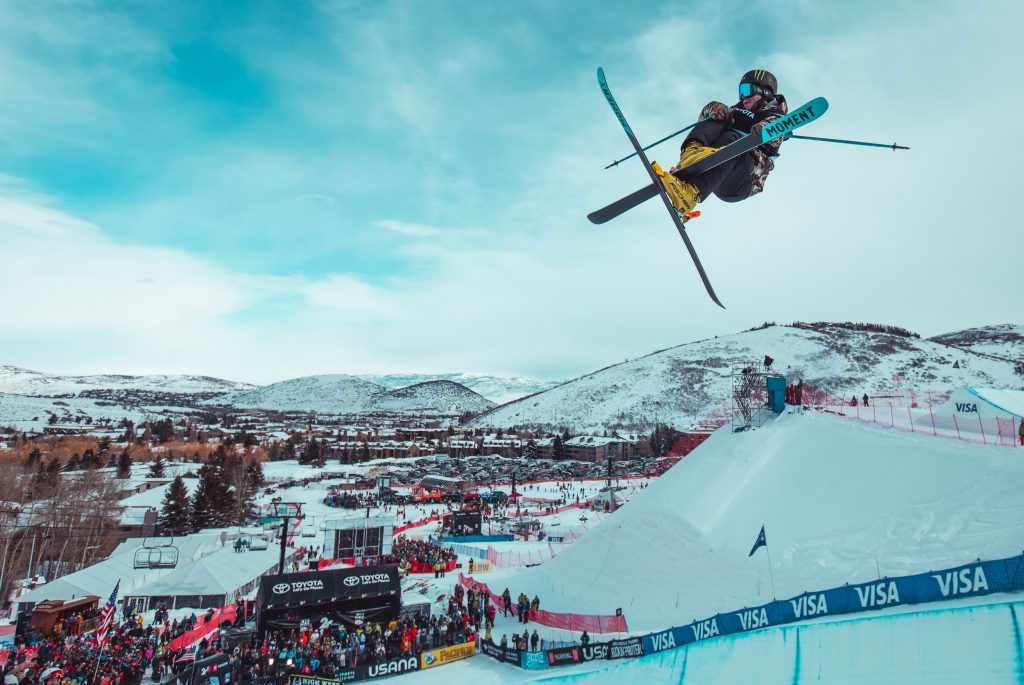
Winter recreation continued to grow at an exponential rate. By 1990 skier days for the three local ski areas were over 850,000. In 1995 Salt Lake City was awarded the 2002 Winter Olympic Games. More than 40% of events were held in Park City at the Utah Olympic Park and Park City Mountain Resort. The event brought international fame to Park City, whose population and development have continued to grow as a result.
Snowbird, Utah
Combine the most vertical terrain of all Utah’s ski mountains with legendary powder, Snowbird is a favorite of serious skiers. Not only is there a lot of snow, but it lasts longer than any of the resorts in the region.
Snowbird isn’t just for experts, and there’s a lot to appeal to any skier. More than a quarter of the resort’s 2,500 acres is for beginners. They can enjoy the sweeping views from the wide-open bowls (Snowbird has the best views of any of Utah’s resorts). More than one-third of the trails are rated for intermediate skiers. These skiers will find runs off any of the resort’s nine chairlifts.
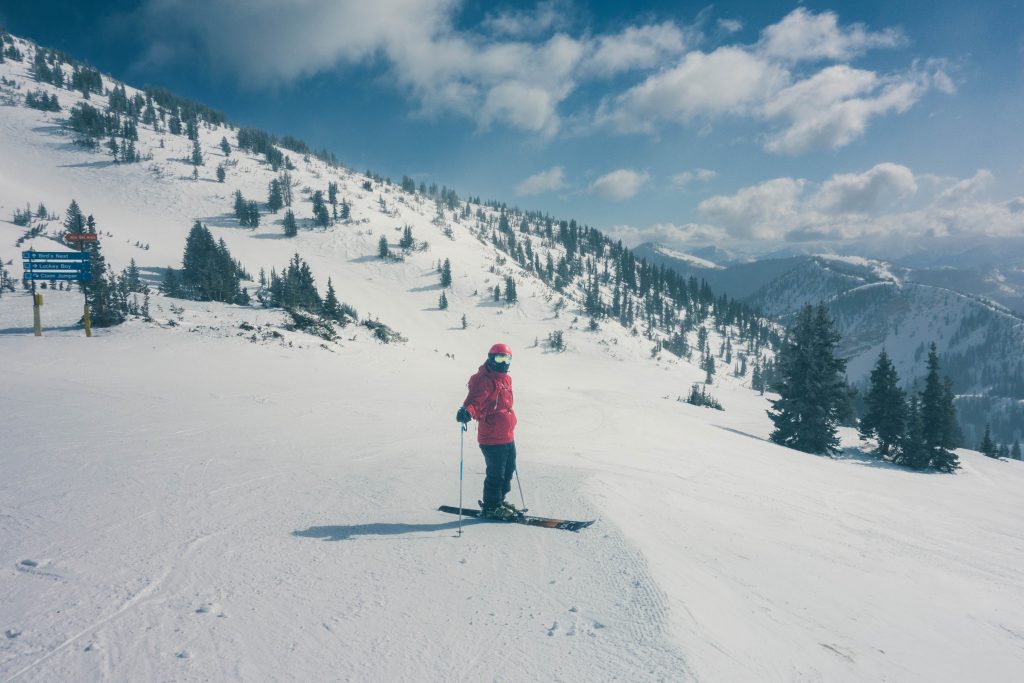
Boarders love it for its 4,700 acres of skiable terrain, and glades with 45-degree steeps. Connected to Alta – you can ski between them – the resorts offer combined passes for skiers, but Alta doesn’t allow boarders. Snowbird is in Little Cottonwood Canyon and is only 45 minutes from Salt Lake City International Airport.
Snowbird is part of both the IKON and Mountain Collective programs.
Tremblant, Canada
Tremblant is another of Canada’s amazing winter sports destinations. As well as cross-country skiing, there’s excellent snowshoeing, snowboarding, fat biking, and much more. Then of course there’s the après ski. Attracting young and hip crowds from Montreal as well as travelers from across the globe. Additionally, if you’re hoping to fund the next leg of your travels, you’ll find both summer and winter hospitality jobs in Tremblant. Earn some extra cash, ski, and party, and improve your language skills in this French-speaking region of Canada.
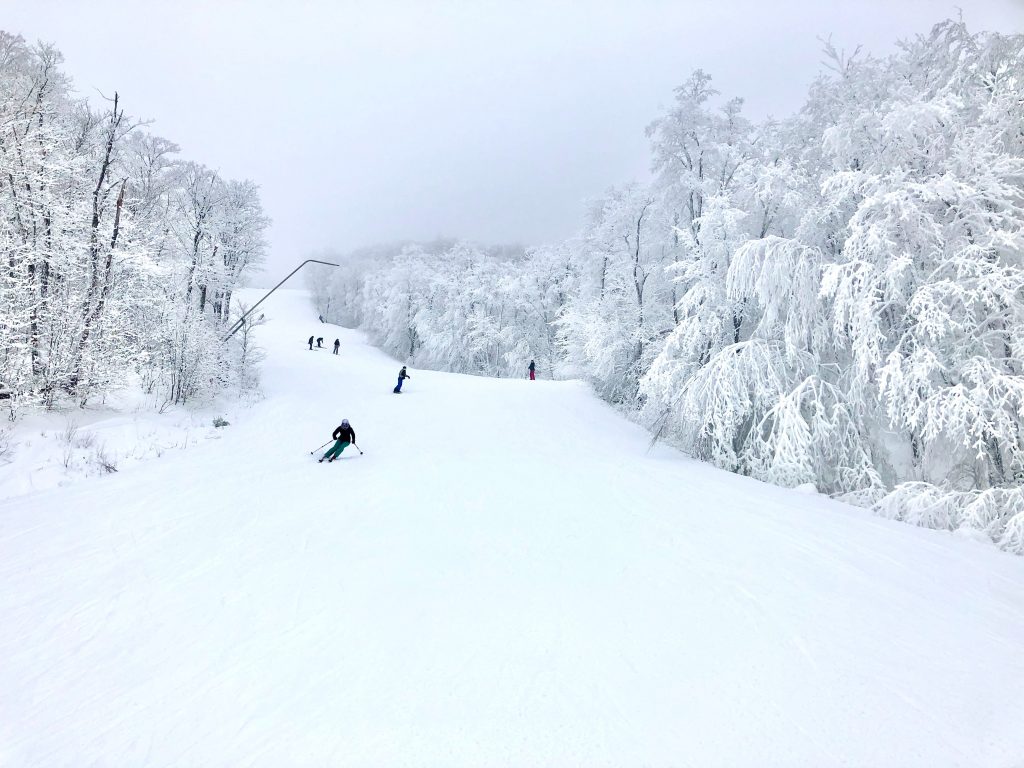
Bretton Woods, New Hampshire
Bretton Woods touts the largest ski area in New Hampshire with 464 acres of skiable terrain, including a terrain park and a summit elevation of 3,100 feet, all surrounded by the woods of the White Mountain National Forest. While it’s not super steep, New Hampshire native Bode Miller says he can even find challenges here. Recent additions of a new base-to-summit, eight-passenger gondola, and stunning on-mountain Rosebrook Lodge provide killer views of the Presidential Range. Bonus points for Bretton come with award-winning snowmaking and grooming, a robust 62-mile Nordic trail network for skiing and snowshoeing, and a dedicated system of winter fat bike trails.
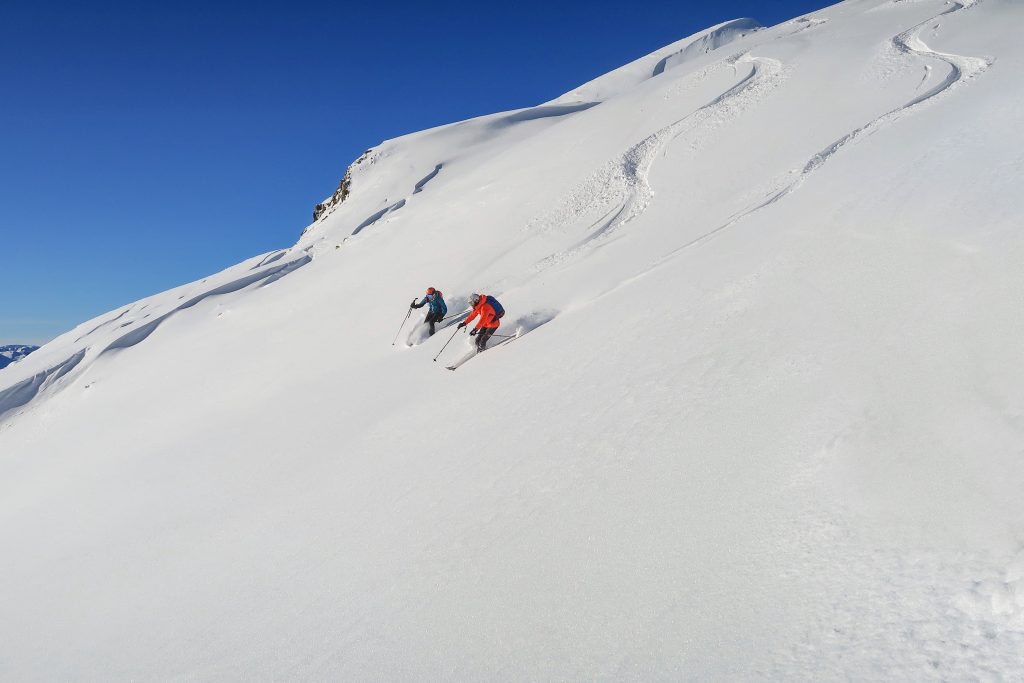
Whitefish Mountain Resort, Montana
This quintessential local skiers’ hill will celebrate its 75th anniversary this winter. With nearly 3,000 acres of terrain, the resort offers plenty of glades and chutes for the experienced skier or rider, as well as uncrowded beginner-geared slopes with stunning views of the Flathead Valley, Glacier National Park, and the Northern Rockies. The new Snow Ghost Express, the resort’s first six-person chairlift, will shuttle guests from the Base Lodge to the top of Inspiration Ridge starting this winter. Break for lunch at the Summit House, at an elevation of 6,817 feet, or grab a pint at the iconic Bierstube. Glacier Park International Airport (FCA/GPI) is only a 30-minute drive from the resort, and the S.N.O.W. Bus shuttle service offers free rides between the resort and downtown Whitefish.
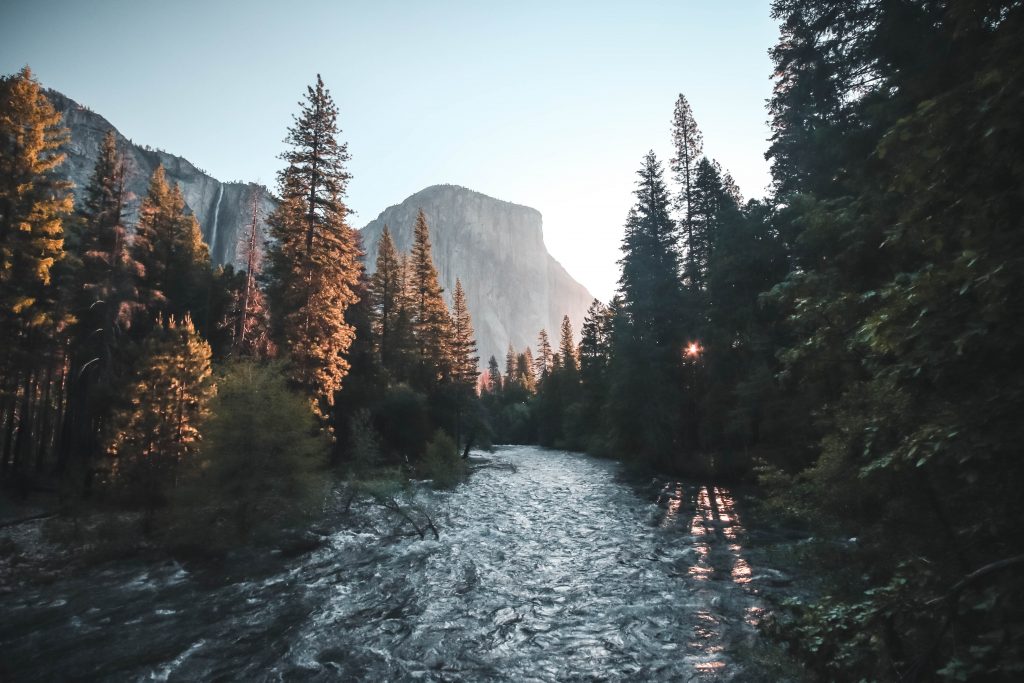
Whistler Blackcomb, Canada
In recent years, Whistler has grown into the largest destination ski resort in North America, known for unmatched big-mountain skiing and snowboarding. With 8,171 acres of skiable terrain, including 16 alpine bowls and three glaciers, there’s easily enough mountain to keep you on new runs through the entire six-month regular season. The pistes offer a wide range of difficulty, making this the perfect place for beginners, adrenaline junkies, and everyone in between. And the debut this winter of the new high-speed Big Red Express Lift and new high-speed Creekside Gondola means you’ll rarely have to wait in line.
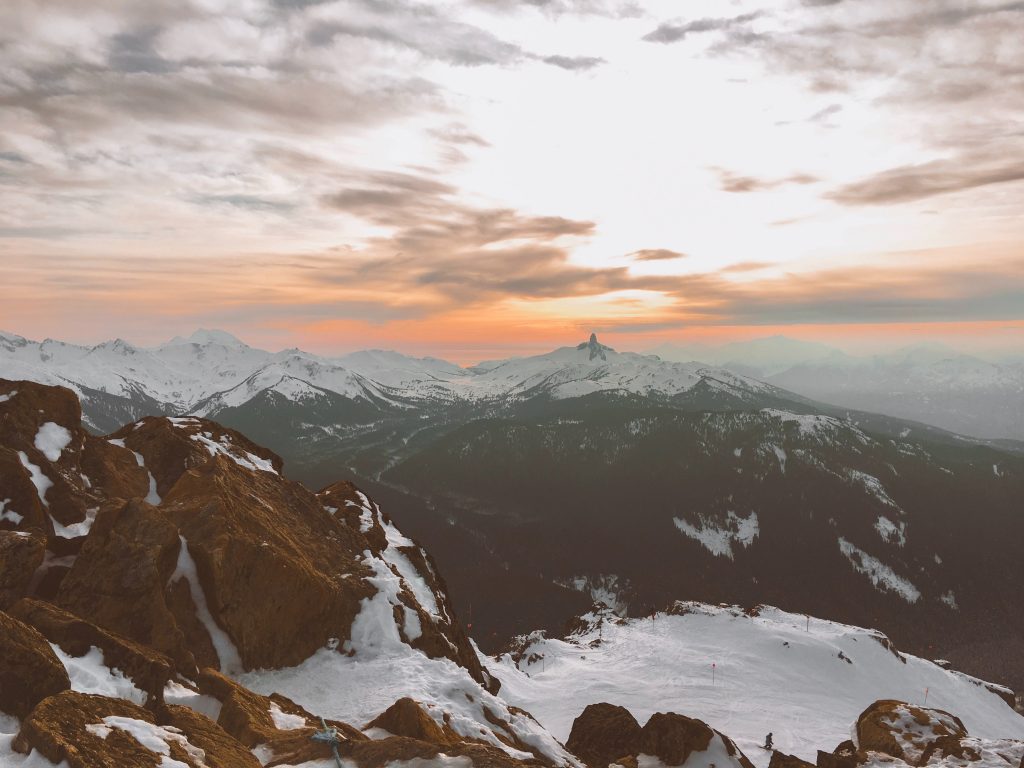
To push your limits with high-alpine descents, book a steeps clinic with Extremely Canadian or a heli-drop with Whistler Heli. Whistler’s après-ski scene is just as legendary as its slopes. The Roundhouse Umbrella Bar is the hot spot on the slopes; in the village, head to the Garibaldi Lift Company for outdoor drinks around a firepit. The hot table to book this season is the new sustainable seafood spot, Wild Blue Restaurant + Bar.
Courvechel, France
Despite its decidedly upscale villages and reputation, Courchevel is for serious skiers looking for snow thrills of a lifetime. Part of Les 3 Vallées region, the world’s largest Alpine ski domain, with 600 kilometers of interconnected ski runs across 10 summits higher than 2,500 meters, Courchevel offers 150 kilometers of Alpine ski terrain accessed by 60 lifts.
The yearly average of four meters of natural snow is meticulously maintained and groomed, and off-piste skiing is legendary. Black runs include one corridor (couloir) that’s considered one of the most difficult black runs in the world; there’s also a good choice of steep black mogul runs.
For tight tree skiing, head for Jockeys and Jean Blanc pistes, from the top of Col de la Loze to Le Praz. Jean Blanc is a former World Cup downhill runner. At the end of the day, you’ll find restaurants in any of the five villages (seven of them are Michelin-starred), although this season won’t see the usual dazzling après-ski scene that has made it among the most popular ski resorts in France.
Cortina D’Ampezzo, Italy
The five ragged peaks of the Cinque Torri give upscale Cortina D’Ampezzo the most beautiful setting of any of Italy’s ski resorts. Known only to avid skiers before it hosted the 1956 Winter Olympics, Cortina became an overnight sensation for the well-set winter set.
The town is still decidedly high-end, but skiing here is a surprising bargain, thanks largely to the value-packed Dolomiti Superski Pass. This gives access to the lifts and trails of a dozen resorts, most linked to give nearly 400 kilometers of interconnected skiing. Included are the several ski towns between the peaks known as the Gruppo del Sella and the Marmolada Glacier; this entire area is included in a UNESCO World Heritage Site.
More than three dozen lifts in Cortina alone carry skiers from the center of town to snowfields at the crests of the highest ridges, from which they can ski back into town in a single exhilarating run or spend the day on the high-altitude snowfields.
Skiing here is one of the top things to do in Italy. Not just for experts, Cortina’s terrain is about half suitable for intermediates. There’s also a bobsled run and the Olympic rink for ice skaters.
Opened in 2022, the 10-person Son dei Prade-Cianzopè-Bai de Dones gondola connects the Tofana and Cinque Torri areas, making it much easier for skiers to reach the Sellaronda and Dolomiti Superski area from Cortina with their skis on.
St. Anton, Austria
A legendary name in the hearts of skiers, St. Anton is where the first ski club in the Alps began in 1901. Its 280 kilometers of terrain at heights reaching 2,800 meters are no place for beginners, or even most intermediates, as they include some of the most challenging runs anywhere in the Alps.
The moguls are as legendary as the resort itself, and the off-piste skiing is superb, as it’s one of the snowiest resorts in the Alps. For the most breathtaking experiences, hire a guide and head for the spectacular views around Sonnenkopf; ask about the Schindler Chutes or the Waterfall route into Langen.
The regional Arlberg lift pass gives access to 340 kilometers of slopes and pistes, including those at the nearby Austrian ski resorts of Lech and Zürs, both of which have ample opportunities for beginning and intermediate skiers.
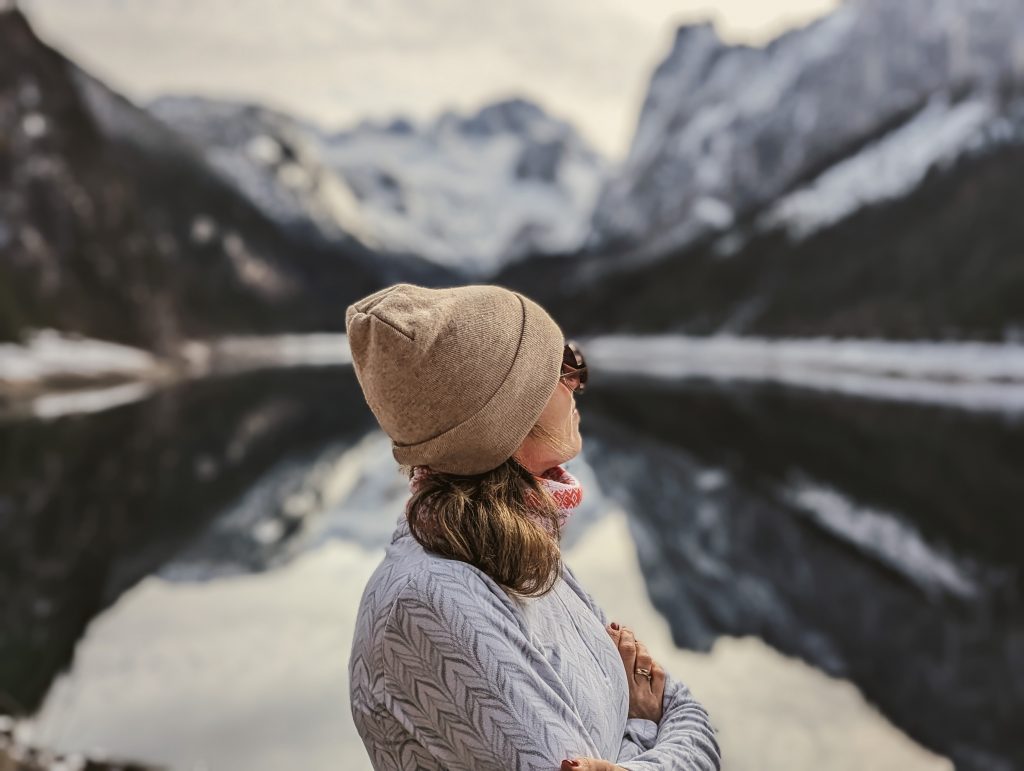
You can take a shuttle bus to these, and some of the other resorts connected to St. Anton by Flexenbahn, a cable car that links to the other side of the Flexen Pass.
The circuit takes experienced skiers from St. Anton/Rendl through Zürs and Lech to Warth, returning back to St. Anton. The circuit encompasses the entire Ski Arlberg skiing region.
St. Anton village is a sweet cluster of Alpine inns, shops, restaurants, and ski lifts leave right from the village.
St. Moritz, Switzerland
With a claim to being Europe’s first winter resort, and still, one of its most glamorous, St. Moritz has plenty of credentials to make it stand out among Switzerland’s many ski resorts. Although it may be known for its glitz and social scene, there are still plenty of ski challenges. It has hosted two Winter Olympics and five Alpine World Ski Championships, the latest in 2017.
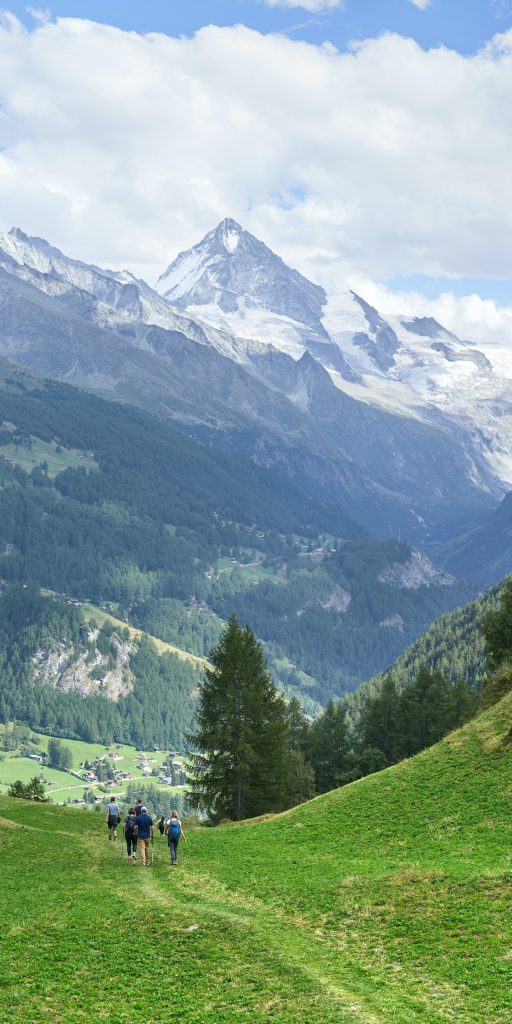
St. Moritz is strong in intermediate terrain, but about 30 percent is rated black and there is ample off-piste, some backcountry, and some marked itineraries. Because it is not as well-known for off-piste, it remains a well-kept secret, which means that its backcountry runs are less used, and hence not as tracked as the better-known destinations.
For the steepest and most challenging terrain, head for the Diavolezza and Lagalp, where a deep base ensures excellent snow.
Cerro Catedral, Argentina
With the tallest mountains on Earth outside the Himalayas, the Andes offer plenty of vertical, and no place takes better advantage of that than Cerro Catedral, in the Patagonia region of southern Argentina. Named for the cathedral-spire mountain peaks, Cerro Catedral’s scenery is breathtaking, with views across Lake Nahuel Huapi and the surrounding snow-covered summits of the Andes.
Here, in the southern Andes, where the snow is most plentiful, the ski season lasts from June to October, but early August to early September promises the deepest snowpacks and best powder, as well as the lowest crowds.
With 1,150 feet of vertical and 3,000 skiable acres, experts have a plethora of choices. The off-piste and tree skiing is superb, and there are miles of lift-accessed backcountry terrain and hike-in territory filled with steep chutes and bowls. My favorites are the La Laguna zone and the lower fingers of Alaska. To experience the best terrain, go with a ski guide. Freestyle skiers and riders have a dedicated terrain park.
You could mistake the chalets at the base for an Alpine village, and more than 5,000 beds are within walking distance of the main lifts.
Hakuba, Japan
Honshu, Japan’s main island, is home to the Japanese Alps, with far more steep, rugged, and varied terrain than the gentler slopes of Hokkaido’s volcano cones farther north. Filled with steeps and chutes, as well as long cruisers, these mountains are serious.
The two parts of the Hakuba resort join at the summit, and you can ski them on a single pass. Each has its own appeal, with Hakuba 47 the favorite of boarders, for its park that includes a professional-grade half-pipe and challenging jumps. Hakuba Goryu has more beginner terrain and a large night skiing area.
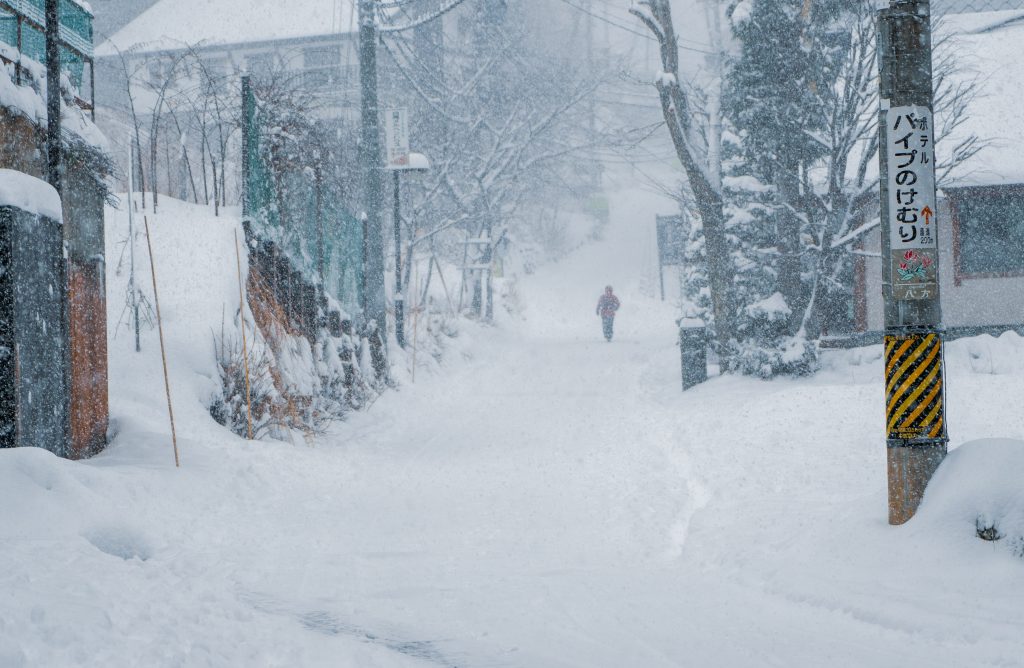
Hakuba is a family-friendly resort, with play areas for children and plentiful family lodging; kids under five skis free.
It’s easy to combine these two with other resorts in the immediate area. Happy One, Norikura Onsen, and Cortina (not to be confused with the one in Italy’s Dolomites) for a wide variety of pistes and backcountry experiences for all levels of skiers.
Another appeal of the Hakuba region, as opposed to the Hokkaido ski resorts, is that you’ll find a more authentic Japanese cultural experience here than in the more international resorts of the north.
